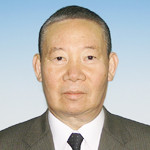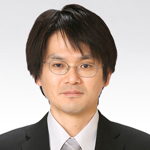The Japan Academy announced that it will award the 101st Japan Academy Prize (2011) to Professor Emeritus Masahiro Shogaito and Associate Professor Takuro Mochizuki of the Research Institute for Mathematical Sciences. The highest of its kind in Japanese academia, the prize is awarded for outstanding research achievements in the area of scholarship.
Masahiro Shogaito (Professor Emeritus, Graduate School of Letters)

Born in 1942, Professor Emeritus Shogaito (age 68) withdrew from his doctoral program at Kyoto University’s Graduate School of Letters, then successively served first as an assistant professor, then as a professor, at Kobe City University of Foreign Studies, after which he became a professor at Kyoto University’s Graduate School of Letters. He was conferred the title of professor emeritus of Kyoto University in April 2006, and has been serving as a visiting professor at Kyoto Sangyo University since April 2006. His area of studies is linguistics.
The prize is awarded for his series of linguistic studies on ancient Turkish literature represented by his 2008 publication, "Philological Study on the Uyghur Abhidharma Texts." Professor Emeritus Shogaito not only deciphered a number of Uyghur Buddhist scriptures--particularly, from the Mongolian period--written in the Uyghur cursive script and demystified their content, but also elucidated the linguistic contacts of the Uyghur language based on loanwords contained in the text. He is, in fact, renowned as the world’s top leading scholar in this field inside and outside Japan.
Takuro Mochizuki (Associate Professor, Research Institute for Mathematical Sciences)

In March 1994, during his third year in college, Associate Professor Takuro Mochizuki withdrew from the Kyoto University Faculty of Science for early enrollment in the graduate school, and completed his doctoral program at the Kyoto University Graduate School of Science in March 1999. In April of the same year, he became a teaching associate at the Osaka City University Faculty of Science, then an assistant professor at the Kyoto University Graduate School of Science in April 2004, and later an associate professor at the Kyoto University Research Institute for Mathematical Sciences in May 2008.
The prize will be awarded for his study on pure twister D-modules. Pure mathematics encompasses the three major fields of algebra, geometry and analysis--with polynomials being the main focus in algebra, spaces or geometrical figures in geometry, and partial differential equations in analysis. Algebraic analysis, which studies the structures of linear partial differential equations in curved spaces, called manifolds, using algebraic methods, has been one of the central challenges of modern mathematics under many years of study at the Research Institute for Mathematical Sciences. Algebraic analysis is considered a study of great profundity where the three fields of mathematics, algebra, geometry and analysis are intermingled. The pure twister D-module, in particular, is a new concept which was discovered in the course of studying partial differential equations within a space called algebraic manifolds expressed by "polynomial = 0."
Studies after the mid-20th century have revealed that algebraic manifolds have some characteristic geometrical properties different from other spaces (manifolds): the algebraic structure is presumed to be affecting the geometrical structure.
Associate Professor Mochizuki has studied the pure twister D-module and its application, which leads to the proof of Dr. Kashiwara’s conjecture that an attribute concerning partial differential equations, called semi-simplicity, is retained even after various mathematical operations are performed. In other words, a simple structure of partial differential equations are, to our great surprise, retained even after such operations, since semi-simplicity means that partial differential equations have a simple structure. This indicates that algebraic structures also affect analytical structures to a significant degree.
Thus, his new theory on the pure twister D-module is considered to be a significant achievement in modern mathematics and is expected to have many different applications.

